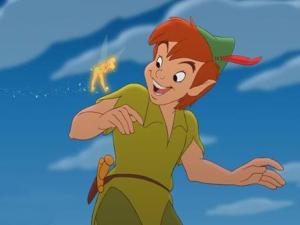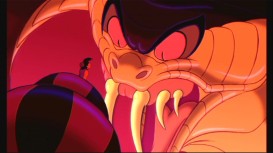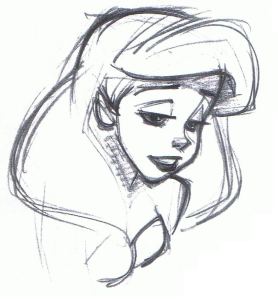JACK SKELLINGTON
“That’s right…I AM THE PUMPKIN KING!”
***
~~~ A BONY MAN…
In the world of Halloween Town lives Jack Skellington, the King of the Pumpkin Patch. As the patron and leader of that macabre holiday, Jack is responsible for making every Halloween more terrifying and dreadful than the last. After all, no one can scare people like he can, or have quite the artistic zeal in such a responsibility. Yet the Pumpkin King is quite open to new things, to say the least, and this fighting thing looks like fun to Jack. Why, he’s betting that he can improve on this Rumble with some ideas of his own…
~~~ AN BONY BEARING…
Idle Stance
Jack stands tall, arms at his side, eager to see the excitement of this Rumble!
Walk
Jack maintains his pose as he moves elegantly.
Run
Jack hunches slightly as he outstretches his arms, pumping them.
Crouch
Jack’s limbs prevent him from having an effective crouch, instead forcing him into to settle for a mere squat that doesn’t bring him down much at all.
Dizzy
Small Christmas trees and pumpkins float around Jack’s head as he struggles to keep his composure.
Sleep
A small nightcap is drawn in on Jack’s head as he falls to the ground and snores.
~~~ A BONY FORM…
HEIGHT ~ 9
RANGE ~ 8
RUN ~ 8
JUMP ~ 7
TRACTION ~ 6
FALL SPEED ~ 5
POWER ~ 5
WEIGHT ~ 2
Jack may be tall enough to see eye to eye with Ganondorf himself, but he’s not as easy to hit a target as most other large characters, due to being thinner than the columns supporting Luigi’s Mansion. He stands straight and tall when idle, and can maintain the poise of his upper body while walking at any speed. When running and jumping, his outstretched limbs indirectly increase his hitbox size, so sometimes you may want to remain walking to give your foes a harder time trying to lay a hand on Jack. His highest walking speed is just behind his high dash anyway, and his lightness is a frightening hazard for any player to work around.
***
~~~ BONY SPECIALS…
Special ~ Trick or Treat!
Jack conjures a carved pumpkin from his hand, large as a smart bomb, and lets it float in the spot in front of him. Where did it come from, and what keeps it afloat? I’m afraid I can’t tell you that…
These pumpkins float a Pikmin from the ground, and can also be placed anywhere in the sky, smiling their grisly grins at the screen. They’re quite unbudgeable – unless an unlucky foe would be a stagebuilder block near it a few moments after its creation. You see, these pumpkins have quite the desire to smash themselves into careless brawlers and engulf them in a ghastly explosion {15%} not unlike a Bob-omb’s.
Not all’s doom and gloom for the foe, however. Once a pumpkin locks its sights on someone, it’ll float at them menacingly, but slowly, gathering speed as it pursues the foe. But in this state, any attack dealt to the pumpkin with 10% or more damage, even jointed ones, will knock it away like a Primid, making it careen and bounce across and off the stage. Jack’s quite vulnerable should he be hit by his rejected treats, taking the brunt of the explosion, and he can only have two of these out at a time too.
But what’s this? Pressing A during the brief starting lag of this move creates an entirely new pumpkin! They look and act the same, yet instead of a deadly explosion, their collision with anyone creates an outpouring of candy instead, healing anyone for 15% in the same area! My, what a fine treat from ol’ Jack! And if the foe throws these pumpkins away, well, Jack wouldn’t mind reaping that healing instead! Since these are a different sort of pumpkin, this means Jack can have as many as four identical-looking pumpkins grinning their grins around the stage at a time. And as for the foes, they’ll be quite in the dark as to which pumpkins have the treats and which have the tricks…
Forward ~ Ghost of a Chance
Jack holds his hand in front of him, as though holding something – and some ghosts appear in it as a swirling white mist almost as large as Bowser. It seems some other spooks of Halloween Town wanted to join in on the fun, but Jack could only afford for the incorporeal to tag along. This is about to become quite terrifying for everyone else…
Tapping the input makes Jack release this ghost mist as soon as it materializes, and it’ll become invisible as it hovers in the place it was left in. You can hold down the input to make Jack hold onto the mist while able to go moving and jumping wherever. If you tilt in the direction Jack is facing on release, the ghost mist will slowly float forward on release at a speed between crawling and slow walking based on the tilt. Of course, whether it moves or not is disguised by its invisibility.
These ghosts help to boost many of Jack’s attacks to make them even more terrifying, dissipating afterwards. You can only have one of these floating out at a time, the first one disappearing if you release another batch of ghosts of the same kind. What? Oh yes, like your Neutral Special, you can create a “fake” ghost mist of mischievous spirits by pressing A instead of releasing the input. Since you’ll end the move by releasing the ghosts, it may be better to let go of a doppelganger batch if you don’t want to re-place the actual ones. As for what ghosts do exactly, you’ll have to wait for the rest of Jack’s moves, but rest assured that these “fake” ghosts will perform the same effects with none of the damage and knockback. After all, your foes will be quite terrified regardless of whether the ghosts are for real or not, seeing as they won’t know if the ghosts are inching forward or simply lying in wait in the first place.
Up ~ Happy Haunting
Some spirits seem to have come to Jack’s aid – and believe me, there’s plenty of spirits who wouldn’t turn down helping the Pumpkin King. For three seconds after inputting this lagless move, Jack will have near-doubled jumping capabilities and dashing speed thanks to the wispy spirits around his limbs. His best walking speed is still as steady as ever, however.
While in this state, any attack Jack performs that would be improved by his overlapping with a ghost mist with either his body or his limbs is automatically buffed by the helpful spirits! Unfortunately, such an action also removes Jack’s newfound agility, and bars him from calling upon the spirits’ aid for three seconds afterwards. Jack can end up open to counterattack with his recovery removed should he be careless.
Then again, Jack can attack with these spirits while overlapping with an unseen ghost mist as well. The mist will be used up instead, but as a boon, the spirits become invisible, waiting to unexpectedly buff Jack’s next attack on an unsuspecting foe!
Down ~ Graveyard
Jack reaches down into the ground to pull up a…gravestone? How did that get there? It’s a little patch of Halloween Town, really; it even comes with a jagged gothic fence in the background, spreading past the gravestone three stagebuilder blocks on both sides.
Naturally, the gravestone comes with a grave, but an empty one. It won’t appear onstage, instead manifesting as a pitfall trap hidden under the gravestone, and I’m sure you’re all aware what those do. Then again, you can also tilt left or right during the start-up lag to move the location of the trap, concealing it until the foe makes that misstep. The trap can be moved up to three stagebuilder blocks to either side of the grave, so the fence serves as a marker for where it may lie. A wide area to cover for a simple trap, given this, remaining here isn’t a smart defensive choice.
But surely the foe will simply avoid lingering in such a creepy spot, then? Well, perhaps not completely. You see, the homeliness of this dreadful grave makes the ghosts from your Side Special giddy with delight, so much that they become visible when over the spiky fence. Not only that, but the awareness of a pitfall trap below them causes a fake ghost mist to shiver in anticipation of such a scare! These spooks just can’t hide their excitement. On the other hand, a real ghost mist will shiver over a random spot instead, capable of fooling the foe into thinking the real location of the trap a safe place. How well you can manipulate your foes’ fears depends on which mists you use, and will hopefully result in a foe with nowhere to run as Jack approaches their buried bodies…
~~~ A BONY OFFENSIVE…
A ~ Spine Chilling
Jack stretches one of his arms out and begins dancing his fingers over the air in front of him. Oh, Jack, this is hardly the time for such childlike gestures! He can hold it for as long as he wishes, dealing multiple fast flinching hits with his spiderlike movement {1%}. Then again, such a small hitbox can be easily DI’d out of.
With ghost mist overlapping with Jack, the ghosts transform into spectral worms and insects, buzzing under Jack’s fingers. This increases the damage, hits everyone in an Electrode-sized area under Jack’s hand, and lasts for as long as the move is held down. Did I mention this move is particularly chilling if used on a foe’s back? Oh yes, if a foe has their back to Jack, they will be reduced to stunned state akin to Zamus’s Paraylzer after a second of Jack prickling the back of the foe’s neck. And ghosts can help reduce that time to half a second instead…
Forward ~ Bony Grasp
Jack takes a moment to bring his arms back before making a fearsome swipe at the foe with both of his arms {7%}, like a scorpion closing its claws in. Given how long his arms are, this move has quite some range, covering almost a whole Bowser length in front of him. Foes caught are brought right in front of Jack – allowing him to follow up with his Forward Smash, as you’ll see soon enough.
Should Jack overlap with a ghost mist upon execution of this move, large wraithlike claws will appear alongside Jack’s arms to mimic his grasp, pulling in anyone caught {5%} towards his clutches. The size of those claws effectively double the range of this move, but they’re not as dangerous damage-wise as Jack’s hands. On an interesting note, though, anyone the claws push to Jack will end up with their backs turned to him. Hmm…
Up ~ Wave of My Hand
Jack quickly snatches the air above him {9%}, throwing foes upwards at knockback lethal only at around 180%. With ghosts helping out, a ghastly axe swings with Jack’s movement, increasing the range by a Pikmin’s length yet inflicting less damage {5%}.
But supposing the foe’s overlapping with the ghost mist instead, hm? The ghosts will then tag along with the unlucky foe for up to five seconds before dissipating. Should that foe attempt to bring up their shield, the ghosts will be only too happy to scare the foe out of it {8%}, knocking them back into a vulnerable state. Jack can use this to ensure that shield-happy foes are kept in check – or simply fool the foe into not shielding while the ghost mist still waits to come out when least expected.
Down ~ Well-Placed Moan
Jack’s crouch consists of bending his legs enough that his whole upper body stays just above the ground. From here, he can do a quick scare {4%} at people’s feet that slightly flinches anyone standing in front of him. For anyone unfortunate enough to be crouching right next to Jack, though, they’ll be shocked {8%} straight into the air.
The ghost mist won’t help you increase the range, but it does carry a nasty treat for any foes that might be overlapping with it when the move is done. Like the Up Tilt, the ghosts will follow the foe for the next five seconds. This time, after the time is up, they’ll inflict 1% damage for every ¼ second the foe spent airborne through a piercing wail. That should be a fearfully painful enough to dissuade the foe from keeping to the air, and there’s no reason to not feint this move either. You can probably convince the foe to stick to the ground where one can always shield against their fears…
~~~ BONY SMASHES…
Forward ~ With The Slightest Little Effort
This time, it’s no trivial spook coming from Jack Skellington; he prepares a truly blood-curling nightmarish face before unleashing it! Anyone facing Jack on at least two Bowsers away on the same level will be shocked {9%-15%} and stunned for some moments. Anyone directly in front of Jack when he does this will be scared so traumatically that they’ll be sent flying straight up from fear, enough to seal the fate of anyone at 80%-50%! Better yet, one can charge this move while moving slower than the dash, with Jack walking forward at whatever speed he was walking as he secretly charges this frightful finale! And did I mention that it even scares foes out of their shields?
Ah, but let’s not get too excited. Aside from the small sweetspot, the ending lag is nothing less than utterly terrible as Jack will more often than not slouch in disappointment should he not send anyone flying. Even if he does, he’ll spend time taking a good laugh out of his success, so he’s really quite unable to take advantage of any stunned foes. You honestly shouldn’t pull this out until the foe’s well and pitfalled, or sliding into your face thanks to a squashed pumpkin.
Oh, but what about the ghosties? On release, the ghost mists, real and fake, will mimic Jack’s scare from wherever they hovered, also stunning foes on the same level and scaring anyone in the dead center of the mist out of their wits. Yes, the fake one is still harmless, but the real one can help to put an extra hitbox where the foe won’t expect it, keeping them on guard as Jack casually strolls across the stage.
Up ~ King of the Pumpkin Patch
Jack makes a dramatic upwards-grasping motion with his right hand {10%-16%}, a small hitbox capable of knocking out foes at 160%-140%, sending them upwards. This isn’t a very capable KO method, as you’re really better off using your Forward Smash.
So, useless filler? I bet you’ve forgotten about Jack’s Neutral Special then! If any deadly pumpkins dealt damage to a foe in the past 6 seconds, they’ll find themselves with a lingering curse activated by Jack’s Up Smash. A giant spectral skeletal hand will grasp at the foe and hold onto the foe’s body for four seconds plus twice the amount of time Jack spent charging this move. While the foe can mostly attack and move as normal, the hand will slowly drag that foe towards Jack, pushing against their movement.
And as one final boon, the ghost mists will appear as a rising curtain of spirits, reducing float speeds of anyone in the area to 1! They’ll linger for as long as the skeletal hand does, and can be very helpful for juggling foes to their doom.
Down ~ Skeleton Dance
Jack prepares to make three full body spins, arms outstretched. This comes with some good range and damage on each arm spin {2% – 4%}, so Jack can effectively deal with clusters of fighters at once, while punishing anyone who doesn’t DI out. Ghosts overlapping with Jack can augment an individual arm, increasing the hitbox of the hand with a spectral aura the size of an Electrode and boosting the damage to boot {5% – 7%}. Not to mention they make escape via DI much more difficult, allowing you to land a frightening of damage.
One more trick then: does Jack have any pumpkins chasing a foe, Neutral Special or Throw? Then as Jack spins his body, the pumpkin will quickly fly through the background and come back into the fray on the other side of the foe before resuming the chase! Simply imagine a mirror on the foe, and the pumpkin swapping places with its reflection. This can make those momentum-based opponents especially jittery, in case they end up running straight into a pumpkin’s waiting jaws. It’s also useful for fooling mix-ups between the candy and the danger.
~~~ BONY AERIALS…
Neutral ~ Scarecrow
Jack poises like a monster leaping upon its victims, arms outstretched and knees bent. His entire body becomes a lingering hitbox {8%} with this move, lasting a few moments before Jack resumes his normal falling stance. The ghost mist can add some range by closing down as a pair of hungry jaws(7%) on a Bowser-sized area below and in front of Jack. It’s a nasty bite, and both hitboxes do good upwards knockback lethal at 150%.
Forward ~ Arise!
Jack brings his arms down, then moves them up as though gesturing for zombies to rise from their graves. While no such thing happens, anyone struck by the upwards motion {10%} is thrown upwards and likely to lose a life at 160% – if they were on the ground. Airborne foes take much more knockback, dangerous if they’ve received 110% by that point. Ghosts add range much like the Forward Air, turning into an illusory rising swarm of bats {7%} and doing the same upwards knockback.
Back ~ Behind You
Jack quickly reaches behind him; you can’t scare anyone not in front of you, after all. Should he grab someone, he nimbly moves himself behind that foe, fast enough to land an attack of his own once behind the foe. Though he doesn’t stall in the air when using this technique, even when moving behind the foe, there’s almost no landing lag to halt Jack from pulling out another surprise. If you miss though, the ending lag can bite you back, so practice good timing for you scares as always.
Up ~ Skullduggery
Jack pulls out another quick scare by facing up and creating another grimace of terror, complete with clawlike hands. This is enough to spook {6%} anyone straight upwards, particularly knocking out those around 140%. Then again, this move will only hit around the area right above Jack’s head, which we must remember is about as large as a smoke ball. But some nearby mischievous ghosts can magnify Jack’s face with a vision right above his head as long as a battlefield platform, doing the same damage and high knockback. Jack makes quite the character juggler with these upwards-knocking attacks, doesn’t he?
Down ~ Don’t Look Up
Jack lowers one of his hands straight beneath him and makes three tapping gestures below with a bony finger. Back to light creeping harassment, are we? Each tap comes with some frightening damage {3%}, and some good hitstun. With a ghost mist hanging nearby, some spectral hexes magnify the damage (8%). For some added flexibility, you can tilt the arm left or right upon using this move to alter where the hitbox lands. And don’t worry about getting hit by flying foes whose shields have broken; they’ll simply rocket past Jack and out of the stage.
~~~ BONY GRAB…
Grab ~ Skeleton Key
Jack raises his hand above the area in front of him and pinches down with two fingers. I suppose he’d rather not use brute force for his grab, but what surprise does he have in store for the foe then?
Should the grab connect, Jack will hold the foe by their heads with his two fingers like delicate pincers. Given how little strength this appears to show, any foe facing Jack when grabbed will only have half the grab difficulty to mash out of. Not very effective, almost just enough time to use a throw, and don’t all foes face their grabbers?
Not with Jack Skellington, you see. If Jack grabs a foe from behind, such as one pushed towards him by his Forward Tilt, they’ll be facing away from the Pumpkin King, and then it’ll be raw fear of what’s holding them so nimbly by the head holding them down. They’ll have to escape from twice the grab difficulty this time, giving ample time for Jack to enact his pummel.
But first, understand that before Jack throws, he conjures a haunted carved pumpkin larger than a smart bomb to follow the foe from behind as he releases them. These pumpkins don’t resemble those made by his Neutral Special, but they come in all kinds of faces that have no bearing on the throw used. There’s really no damage at all involved; after the time is up, they’ll drop to the ground and disappear. Each pumpkin lasts 6 seconds. Alternatively, Jack hitting the pumpkin himself also destroys it. Aside from that, the pumpkins will relentlessly follow the foe from behind, waiting to enact their ghoulish surprise…
Pummel ~ Pumpkin Swap
Jack still has one throw, however, he has multiple effects avaliable to him on this throw, setting him apart from the not-so-scary participants of the Rumble. The only indication that the pummel has been used is Jack simply tapping his feet in thought, but it causes a whole new effect on the pumpkin – with the only indication to the foe being that animation. The default Pumpkin is Pumpkin A, but each tap will make it Pumpkin B, C, D and so on.
Throws ~ Pumpkin A
While each Pumpkin is following a tagged foe, pressing grab again will have Jack activate it for a different effect. For this throw for example, the pumpkin extends its carved maw to a great size before chomping down on the spot the foe stood on {20%}, dealing upwards knockback lethal at 150% or fully devouring any shield it chomps on. It’s sure to hit – if the foe was standing still or moving slowly. If it misses because the foe was dashing away instead, it’ll fly in pursuit just behind the foe, continuously biting at the air in the event that the foe slows down. After 3 seconds of biting, it’ll finally burn out and drop; it’ll also disappear once it gets one mouthful of the foe. But surely anyone who simply keeps on the move would escape this rabid pumpkin, right? Hopefully, that someone won’t run into any other sinister hazards the way.
Pumpkin B
Upon activation, the pumpkin rushes at the foe and splatters itself on them. That’s…odd. Then your foes find that the pumpkin’s slippery muck not only has coated them, but it has coated their feet as well, changing their traction as though on ice for up to 3 seconds! This can be a most frightening event for when your foe tries to turn around, wherein they end up sliding straight into an open grave. And of course, why not let your foe turn around a few times without activating this to fool them into thinking that this isn’t the shock in store? Then you could make them slide straight into your waiting Forward Smash!
Pumpkin C
With a snap of Jack’s fingers, the pumpkin suddenly grows to an enormous heavy size, large as an Electrode. It’ll also entangle the foe’s feet with its twisting growing stem vine, which is ideal for dragging the foe down as the pumpkin then plummets like Bowser’s Down Special. On landing, the foe can’t move a battlefield platform away from the pumpkin, which will need to have its 15% chipped away to destroy it. Obviously, this is near useless on grounded foes, but can be a nasty surprise for those up in the air, who won’t be able to smash the pumpkin until they’ve landed. And surely no foe would be suicidal enough to jump over a bottomless pit with this pumpkin hovering behind waiting for an opportunity, right?
Pumpkin D
This pumpkin…doesn’t activate. Nope, it just hovers behind for the whole duration, grinning a creepy grin as though it had some trick in store. Your foe is pretty much safe from this kind of pumpkin – so long as they don’t attack, or create any damaging hitboxes. Yes, I can assure you that to anyone who doesn’t attack at all while the pumpkin reads that foe’s every move, the pumpkin will not stretch its jaws to unleash a fiery blaze dealing damage equal to the damage of all the foe’s hitboxes added together. After all, nothing would escape such an attack – not even shields. Those fools who raise their shields would just have the pumpkin burn them to a crisp before unleashing hell upon them…
~~~ BONY MAGIC METER…
Magic Meter and other tricks and treats coming soon!!










